Driving across Panamint Valley I was greeted by Coyote. There are extensive stories about coyote in Native American stories and the symbolism is mentioned here and here. I read several stories about Coyote in Paiute, Shoshone and Navajo folklore while touring Utah’s National Parks earlier this month.
Many years ago I had an intense encounter with a coyote in Jasper National Park, Alberta, Canada. We checked each other out for several minutes on a mountain trail. Coyote was close enough, probably only about 20 to 30 feet away allowing me to examine his eyes and body closely. Eventually I freaked out that I was standing in front of a large wild animal. Coyote walked off the trail and down the hillside toward the river.
Later that day I encountered a bear while walking alone in the woods. But that is another Canadian story.
Coyote on Highway 190, Panamint Valley, Death Valley National Park.
I wanted to get more photos of the coyote, but when I stopped my car the coyote started trotting towards me. I read last week about a Death Valley tourist taking photos of a coyote and the animal tried to jump in his car. I rolled up my windows and drove away.
View looking west from Panamint Mountains to the Panamint Valley, Inyo Mountains and Sierra Nevada in the distance.
Highway 190 is loaded with road dips as it descends from 4,956 feet at Towne Pass in the Panamint Mountains to below sea level in Death Valley.
Stovepipe Wells
The place in Death Valley National Park with the most services besides Furnace Creek is Stovepipe Wells. This location is 27 miles east of Panamint Springs and 28 miles north of Furnace Creek, which is the main services center for Death Valley.
There is a market, gas station, restaurant, saloon and motel with swimming pool.
Stovepipe Wells, Death Valley National Park.
Stovepipe Wells has 83 rooms and summer rates are $95 to $160 per night. Summer specials reduce the Deluxe room rate from $160 to $122 through June 30, 2013.
Stovepipe Wells has its own website at escapetodeathvalley.com.
Gas in Death Valley is $5.40 to $6.00 per gallon. Fill up before you arrive.
Mesquite Flat Sand Dunes near Stovepipe Wells are a colorful contrast to the mostly rocky landscape. Less than 1% of Death Valley is sand covered.
Mesquite Flat Sand Dunes. These dunes are probably over 100 feet high.
Photo taken beside Sea Level sign showing the road descending into Death Valley.
Furnace Creek Visitor Center temperature gauge showing 106 F at 6:15pm, Tuesday, May 28, 2013. The hottest temperature so far in 2013 was 115 F on May 14. Furnace Creek is 190 feet below sea level.
Furnace Creek Inn at the base of the Funeral Mountains, Death Valley National Park. Here is my post last week on my tour of the historic Furnace Creek Inn hotel’s grounds. The property is closed May to October.
Death Valley is more than 100 miles of road from CA178 in the south to Scotty’s Castle in the north. The valley is surrounded by high mountains on all sides. This creates a convection oven condition where hot air just circulates rather than escaping into the desert night atmosphere.
The entire time I was in the Death Valley basin from 5pm to 8pm, the temperature never dropped below 100 F. To escape the heat you need to gain elevation. The temperature was in the 80s when in the mountains of Death Valley over 4,000 feet.
From Badwater Basin to Telescope Peak is more than 11,000 feet in vertical elevation. Death Valley offers many ecosystems for the visitor.
Badwater Basin
The deepest land point in North America is Badwater Basin, 17 miles south of Furnace Creek.
Badwater Basin is 282 feet below sea level.
Walking on the ground at Badwater Basin seemed like the rite of a Death Valley trip.
Walking in Badwater Basin.
The clarity of water reflection. Badwater Basin is mostly salt flats that the public is not allowed to walk across. There was still some limited water in Badwater Basin at the visitor site and other locations.
An interesting sign at Badwater Basin is posted on the side of the mountain showing the Sea Level mark.
Sea level sign is 282 feet above Badwater Basin valley floor.
The colors reflecting off the rocks were so intense in the evening sunlight. I am a simple point-and-shoot amateur photographer. My photos don’t convey the dazzling dance of light on rock that visually entertained my eyes.
The CA178 highway from Badwater Basin to Shoshone is 50 miles of winding road with no shoulder in many places and no signs warning to slow down on curves. The posted speed limit is 45 mph in most parts. I was glad to get out of Death Valley before dark.
Sunset behind the Panamint Mountains as I was leaving Death Valley National Park.
TBEX Toronto via Death Valley – Part 1.
Resource: Death Valley National Park website.
Ric Garrido, writer and content owner of Loyalty Traveler, shares news and views on hotels, hotel loyalty programs and vacation destinations for frequent guests.
You can follow Loyalty Traveler on Twitter and Facebook and RSS feed or subscribe to email newsletter on the upper left side of this page.


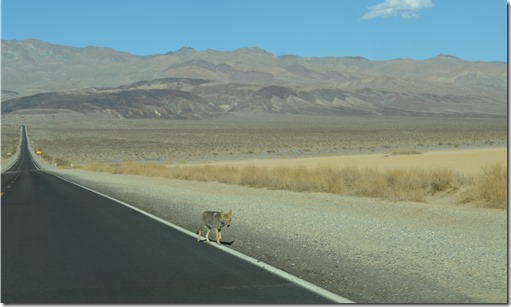
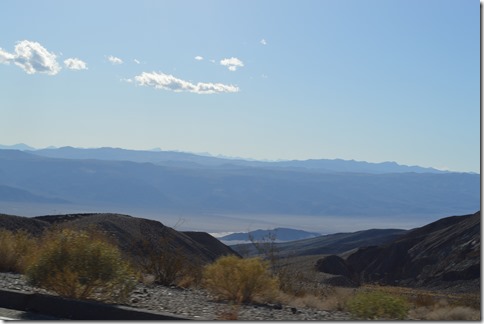
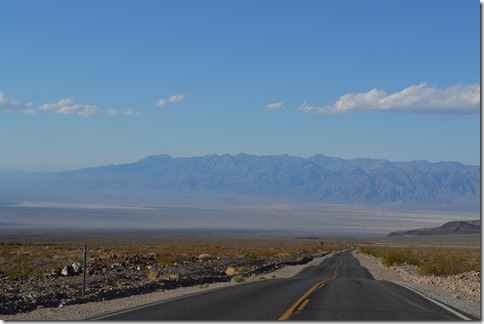
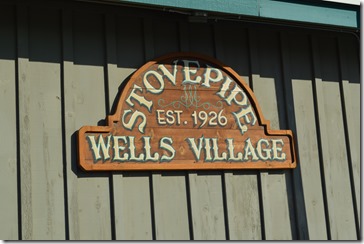
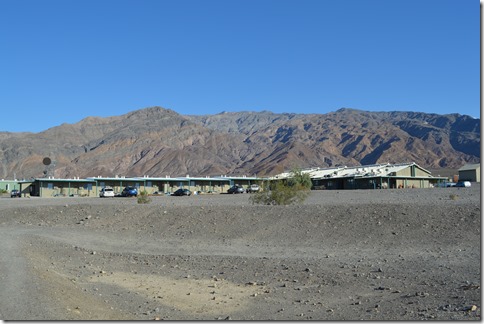
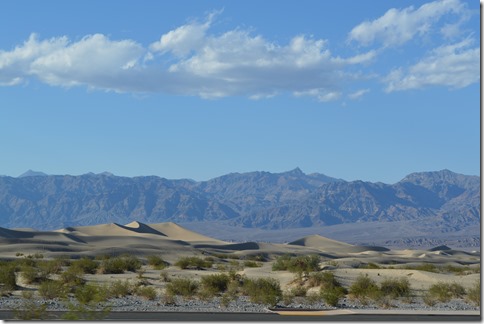

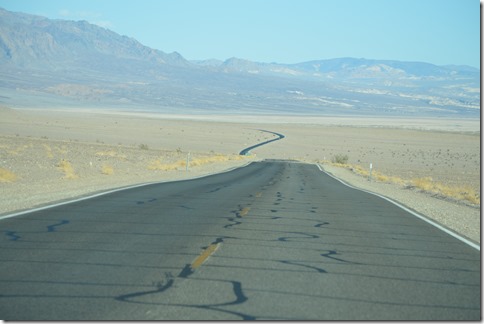
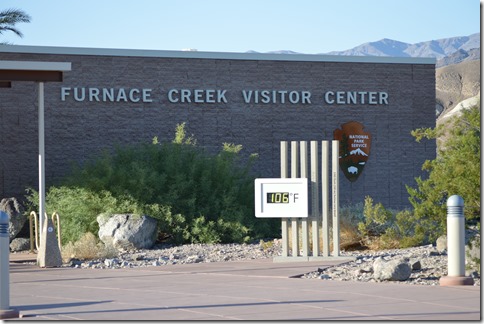
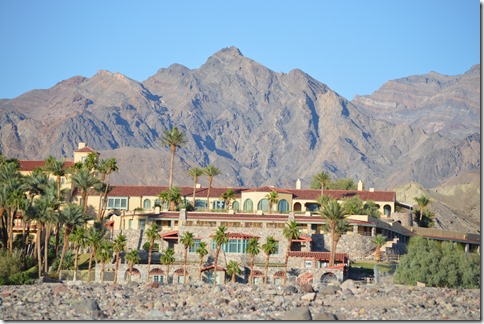
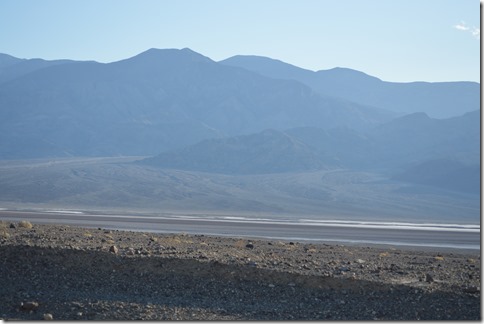
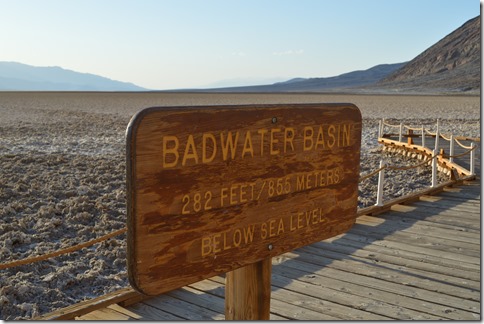
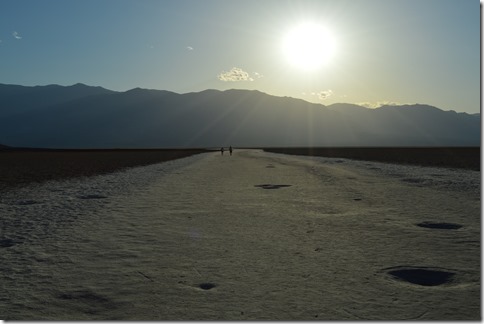
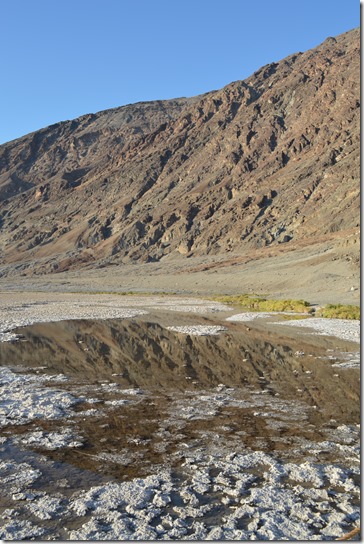
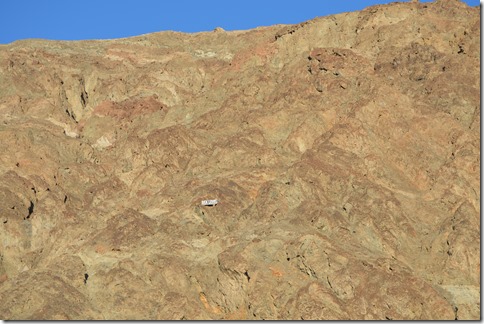
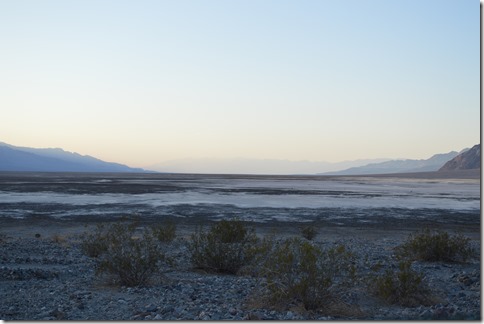
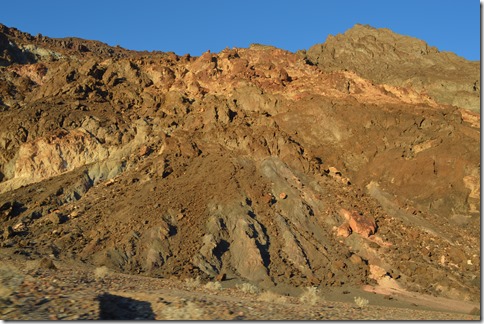
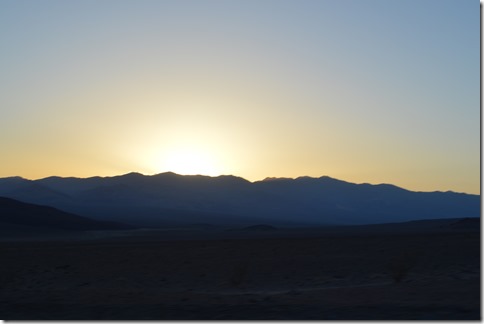
5 Comments
Comments are closed.